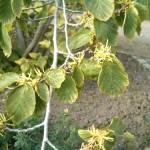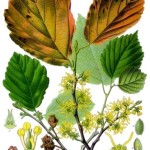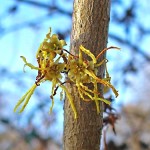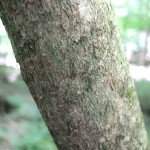Witch Hazel – Hamamelis virginiana
|
Current Demand = Normal |
Parts Used: Bark & Leaves |
 |
 |
 |
 |
Family: Hamamelidaceae
Common Names: Spotted Alder. Winterbloom. Snapping Hazelnut, water-witch…
Description:
Witch Hazel is a deciduous shrub with smooth gray to gray-brown bark, fragrant winter flowers, and woody fruit capsules that eject two seeds up to 13 feet when ripe. The small shrubs grow up to 24 feet in height. The leaves are 3-6 inches in length that alternate and have an oval shape that is dark green on top and pale green underneath.
The flowers are bright yellow with slim petal tht resemble a spider plant and bloom in mid to late fall. The fruit is a two part capsule that splits explosively at maturity in the autumn 8 months after flowering. The term ‘witch” has origins in old English and means “pliant” or “bendable”, and hazel is derived from the use of the twigs as divining rods.
Planting/Cultivation:
Growing region: found mostly in the rocky soil open woods with dry soil. Larger populations exist in Missouri and the Midwest, however, witch hazel grows in most of the eastern half of the United States.
The witch hazel plant prefers a moist sandy loam in a sunny location. It prefers a rich well-drained soil that is light, medium and slightly acid.
Propagation:
Seed: Harvest the seed “green” before it dries on the plant, usually by the end of August. Place in a cold fame. It may take 18 months to germinate. Prick out the seedlings into individual pots as soon as they are large enough to handle. Keep over the winter in a greenhouse for the first winter, and then transplant the plant in late spring or early summer into a permanent home. See harvesting/drying next
Harvesting/Drying:
Parts Used: Bark, leaves
The leaves are generally harvested in the late summer and early fall while still green in color. The tree bark can be harvested either in the spring or the fall while the sap is moving. The small branches should be gathered in the spring. When collecting leaves be careful not to include seed pods and twigs with your leaves or your crop will be discounted when you go to sell.
When gathering tree bark the same rules apply as with other trees. Only peel one side of the tree or branch allowing the tree to heal itself and continue to grow. Cut only the branches that are smaller than your finger when gathering shoots or branches. Pruning trees properly will promote future growth. Do not collect bark from dead or decaying trees as it has no value.
When you are ready to dry your leaves first remove seed pods, stems, and any foreign material. Never dry leaves in the sun. Dry indoors where heat and airflow are both present. A barn loft or attic with a fan works really well. Leaves placed loosely in a mesh bag and hung from rafters’ works well for drying leaves. Drying times varies depending on weather conditions and drying location; the average drying time is 3-7 days or when leaves crumble.
Tree barks as well as shoots are best dried indoors though both can be dried in the sun. Drying time will depend on weather conditions, for example, high humidity will slow the drying process also thicker barks or shoots will dry slower than thin bark and small shoots.
The more air you can get to teach piece of bark or shoot the better they will dry. A thin layer will dry much easier than a pile. When witch hazel bark is dry it will be brittle and snap not bend and the same goes for shoots they should snap when dry. Once dry, store in paper bags, cardboard or burlap. Never store dried roots, herb or barks in plastic or it will mold.
Attributes (Images)
By H. Zell (Own work) [GFDL or CC BY-SA 3.0], via Wikimedia Commons
By Rob Duval (Own work) [CC BY-SA 3.0], via Wikimedia Commons
 Root Buyer
Root Buyer